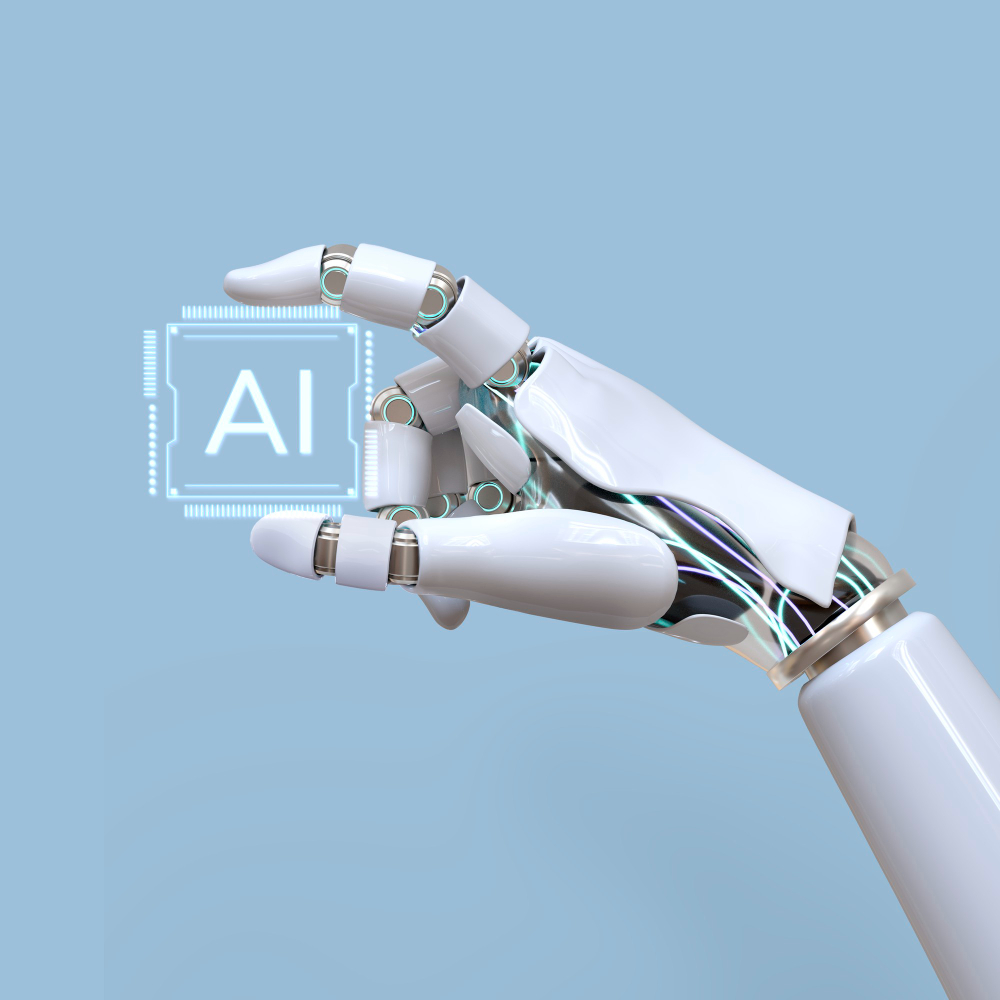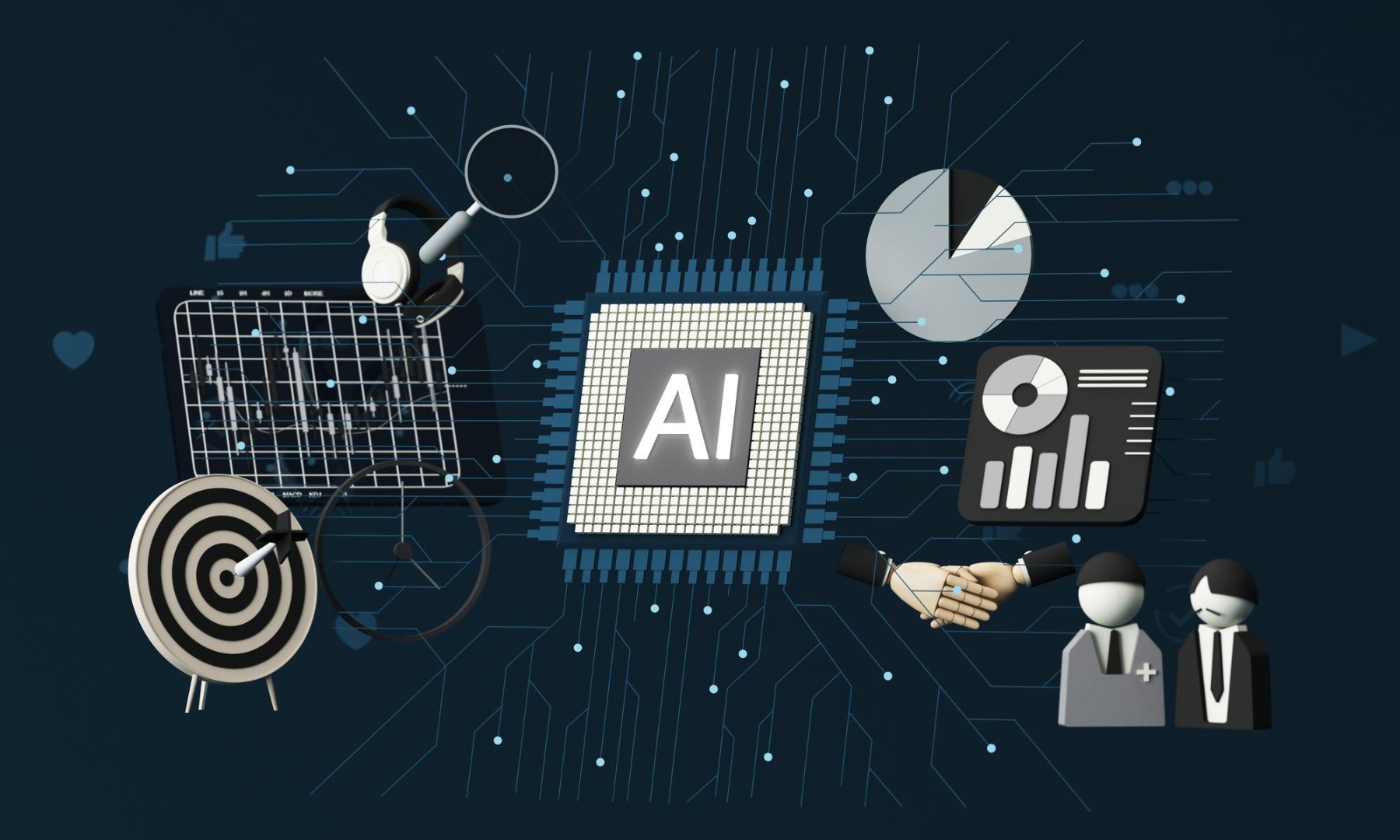Learn more about Artificial intelligence tools!
Artificial Intelligence, or AI, is a field of computer science that studies and develops computer systems and programs with the aim of imitating human performance and providing intelligent solutions to solve complex problems. The main purpose of artificial intelligence tools is the ability to think and machine learning, which allows them to make decisions and perform complex tasks. Artificial intelligence tools use various methods and techniques. In the field of machine learning, algorithms, and models are used to train machines to recognize patterns and rules in data. Machine learning algorithms can be able to recognize patterns, predict outcomes, and make intelligent decisions based on large and varied training data.
In the field of natural language processing, artificial intelligence tools attempt to enable machines to understand and produce human language texts. These tools can help in machine translation, analysis, and summarization of text (content generation), extracting information, and answering questions related to the text.

How does the content creation tool work with artificial intelligence?
In general, the content creation tool based on artificial intelligence works like this:
1. Training in artificial intelligence
No artificial intelligence tool is familiar with business and brand from scratch. In general, humans should train AI-based tools to get the best results. As a result, it is necessary to give a series of basic information about these tools to start working with them. Information such as existing content samples, keywords, and important phrases. Using this information, artificial intelligence determines what style of content the audience is most interested in.
2. Determining the goals and content requirements
After giving the basic and required information that you want to be observed in the content, artificial intelligence starts to generate content based on this information. Artificial intelligence uses two concepts, natural language processing (NLP) and natural language generation (NLG), to produce high-quality content.
NLP is a branch of computer science and artificial intelligence that allows machines to understand sentences and phrases exactly as humans understand them.
NLG is also a software process that makes content look like a human, not a machine, wrote it.
3. Creating SEO content
Content is useful for business and brand when it is of high quality. So that it is displayed in the top results of search engines, including Google, the content that artificial intelligence produces is usually based on keyword optimization and SEO principles.
4. Editing and content editing
The content creation expert should review the artificial intelligence-generated content at the end. Although AI-based content creation tools produce content that is good in many ways, it also has some weaknesses. For this reason, checking the content by a person familiar with the brand’s tone is the last step in the production of artificial intelligence content.
The good news is the edits made to the content are not hidden from the machine learning. The content production system’s artificial intelligence and machine learning take these edits into account in the next content production. In this way, the produced content becomes more perfect over time.
Artificial intelligence tools in the field of vision
In the field of machine vision, artificial intelligence tools recognize and analyze images and videos. Among this field’s famous applications, we can mention facial recognition, pattern recognition, medical image analysis, and self-driving cars.
Artificial intelligence tools in the field of robotics
Artificial intelligence is also used in the field of robotics. Using artificial intelligence tools, smart robots are able to recognize and interact with their surroundings, plan movement, learn, and perform various tasks. Artificial intelligence tools are generally trying to simulate human performance in some areas, such as ordering content.
All kinds of artificial intelligence tools
Examples of artificial intelligence tools include:
1- Artificial neural networks:
Artificial neural networks are mathematical modeling based on the neural structure of the human nervous system. Machine learning algorithms train these networks and are able to recognize patterns and important features in the data.
2- Machine learning algorithms:
These algorithms train models based on training data so that they can recognize patterns and rules in the data and make predictions. Examples of these algorithms include decision trees, support vector machines, deep neural networks, and reinforcement learning algorithms.
3- Natural language processing:
Artificial intelligence tools in the field of natural language processing (NLP) are used to interpret and generate human language texts. These tools use grammatical analysis, semantic analysis, machine translation, text summarization, and answering questions using text.
4- machine vision:
AI tools are used in the field of machine vision to recognize and analyze images and videos. These tools in artificial intelligence can recognize patterns in images, recognize objects and faces, and extract various features.
5- Robotics:

Artificial intelligence is used in the field of robotics to enable robots to interact with the surrounding environment, recognize objects, plan movements, and perform specific tasks.
The most important advantage of tools in artificial intelligence is that they can provide smarter and faster performance in solving complex problems. However, artificial intelligence is still in its infancy. But again, at this stage, it has brought about a tremendous transformation in digital marketing.
What are machine algorithms?
Machine learning algorithms are a set of computational methods and processes that allow machines to learn from data and are able to recognize patterns, predict outcomes, and perform tasks. These algorithms are usually designed based on statistical and probabilistic approaches and are used to solve various problems such as imaging, pattern recognition, data analysis, and natural language processing. Below, I will mention some of the most famous machine-learning algorithms:
1- Decision Trees: In this artificial intelligence algorithm, a decision tree is built using yes/no questions to lead to human-like thinking and decision-making. The decision tree is able to extract the patterns and rules in the data and make decisions based on them.
2- Support Vector Machines: This algorithm classifies data into two or more categories. In this algorithm, an optimal machine is built based on a set of training points using a kernel on the given points, and then it is able to classify new data.
3- Deep Neural Networks: This algorithm is based on the structure of neural networks inspired by the human nervous system. Deep neural networks are capable of recognizing complex patterns and features in data and are widely used in fields such as image recognition, machine translation, and natural language processing.
4- Reinforcement learning algorithms: In this algorithm, an agent learns to make the best decisions in an environment by being in different situations and performing actions.
Comparison of machine algorithms with traditional algorithms
In general, machine learning algorithms are compared with traditional algorithms. This is because machine learning algorithms are able to learn and extract patterns from data, while traditional algorithms make decisions manually using defined rules and regulations. Next, we examine some of the main differences between machine learning algorithms and traditional algorithms:
Generalizability
One of the prominent features of machine learning algorithms is their generalizability. With a set of training data, machine learning algorithms can build a general and generalizable model that can predict and make decisions based on new data. This means that machine learning algorithms are able to adapt to new and unknown data. Traditional algorithms often operate explicitly and based on specific rules and are less generalizable.
The need for training labels
Unlike many traditional algorithms that require labeled training data, machine learning algorithms can also learn patterns from unlabeled data (i.e., unsupervised data). This allows machine learning algorithms to take advantage of unlabeled data and identify hidden patterns in the data.
Adaptability and flexibility
Due to their generalizability and high adaptability, machine learning algorithms in artificial intelligence can be easily improved with changes in data and applied to new problems. Traditional algorithms may need more changes and adjustments to adapt to changes in data and new problems.
Model complexity
Machine learning algorithms, especially deep neural networks, are capable of modeling more complex patterns and features. These algorithms are able to extract and detect hidden and complex patterns in data, while traditional algorithms are usually limited to simpler modeling.
Data volume requirements
Machine learning algorithms in artificial intelligence usually need a large amount of training data to be able to learn patterns well and achieve high accuracy. In contrast, traditional algorithms may work with smaller volumes of data and require less complex computations.
In short, machine learning algorithms in artificial intelligence perform complex tasks with high accuracy in many problems due to high models’ generalizability, adaptability, and complexity. However, traditional algorithms are still applicable for simpler problems with less data volume and may be preferred due to their simplicity and greater interpretability.
For whom are artificial intelligence-based content creation tools suitable?
Social media marketers
Content creation tools provide very good possibilities for social network content creation. As you know, the content of social networks, while being brief and short, should have a high impact on the audience. Content creation tools help you gather interesting quotes and highlights from long texts to use in your social media content.
Content marketers
In addition to simplifying the content creation process, content creation tools help you understand what type of content is right for your audience and also improve your site’s SEO.

In addition, content creation tools show data and statistics that show content’s effectiveness and golden opportunities for new content creation.
Support and customer service
The service and customer support departments of businesses also need high-quality content. The necessary content for this section should be written in such a way that it answers the user’s question or need in the best possible way.
Recently, the use of chatbots has become common in service agencies. Using the content creation tool and the NLG mentioned above, the tone of chatbots can be made closer to human language so that the user feels closer to the support.













